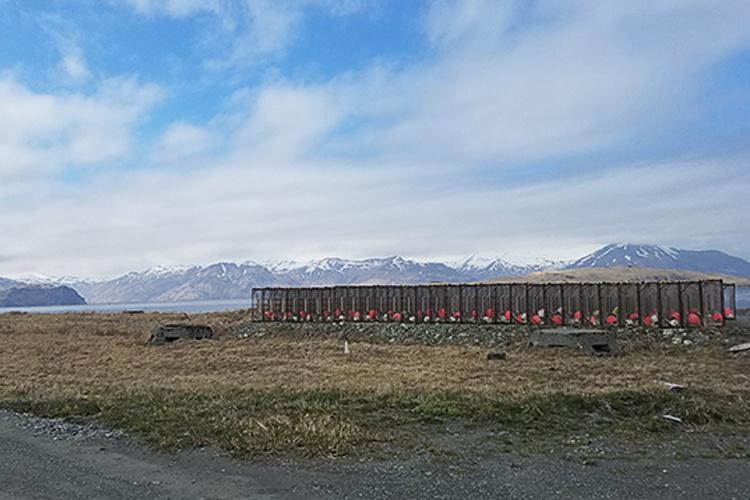Preparing for a research cruise
Any successful research cruise starts days, even months, before the ship leaves port. Months before our trip, we loaded gear and equipment onto the NOAA ship Oscar Dyson, in Seattle. Once we boarded the vessel in Dutch Harbor, Alaska the first step was to set up the lab. We also took inventory of our supplies, checked our nets to make sure they are firmly attached to the frame, and patched any holes. These steps ensure that when we leave the dock at Dutch Harbor, we are ready to collect quality data.
Once lab setup was completed, we made a final run to the store for any forgotten items. It is extremely important to make sure we have all of the necessary supplies because, at sea, we cannot stop sampling to pop over to the neighborhood supermarket. Dutch Harbor is small with fewer than 4,600 people but it has quite a few options to buy missing supplies. On the way, we saw amazing wildlife and gorgeous scenery.

We wear these Gründens when working on deck. The blue net in back is a CalVET sampler, a pair of nets equipped with very fine mesh to collect tiny marine organisms.
I am giving you all these details because in many ways, planning is one of the most important aspects of any research cruise. Gear maintenance and preparing the lab are extremely important tasks because it enables us to collect quality data efficiently. Being disorganized at sea can also be a safety concern. Scientists frantically trying to find tools are distracted and more likely to get hurt.
The data we collect to estimate the number of young fish in the western Gulf of Alaska has been gathered for more than 40 years. The information we gain during this trip helps us to understand the factors that affect the number of fish that will survive and grow over time and space.
Meet the Blogger

Ali Deary
Ali Deary is an East Coast transplant to the Pacific Northwest. While she has been to Alaska as an intern in previous surveys, this research mission is her first as a NOAA employee. Ali graduated with a bachelor’s degree in marine biology from the College of Charleston and obtained her doctorate in marine science from the College of William and Mary.
For her dissertation, she looked at how bone development influenced foraging in early stage fish in the Chesapeake Bay. She joined the Ecosystems and Fisheries Oceanography Coordinated Investigations team in January. In her free time, Ali enjoys exploring the Seattle area with her corgi.



